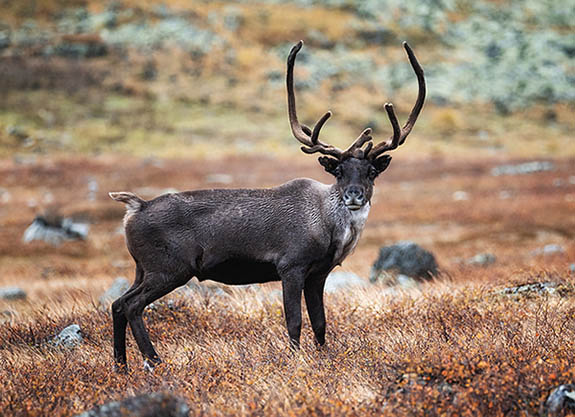The reindeer population in Russia's remote Yakutia territory is making a strong comeback, thanks to the efforts of diamond mining giant, Alrosa.
The company's ecologists and Yakut scientists have joined forces to map the migration routes of wild reindeer herds and to design ways to make their passage safer when the animals cross into infrastructure lines at the mining company's industrial sites.
By placing radio collars on some of the animals, the team has been able to plot the reindeers' seasonal migratory paths and anticipate where and when reindeer may come into contact with Alrosa personnel and equipment. The company is able to track as many as 90,000 animals at a time.
Alrosa has designed crossing points with safer, gentler slopes, and outlined a strategy for stopping traffic completely when the reindeers encounter the mining company's haul roads. When scientists report that reindeers have entered a production area or started crossing a site's access road, the operation is brought to a standstill to ensure that reindeers pass freely.
For a full month after the start of the reindeer migration, Alrosa will alter its road transport schedule, including a complete driving ban during certain hours. Migrations traditionally occur during the spring and fall.
According to Alrosa, tracking collars had been attached to individual reindeer by environmentalists in 2019 and 2020. The collar fastening procedure is painless for the animals, and when the tracking device's battery is depleted, the collar automatically unfastens from the animal.
Alrosa's ecologists learned that putting radio collars on wild reindeer is less stressful for the animals when they are crossing large water barriers.
"Reindeer slow down while crossing the river, so it is not difficult to stop them, fix them in a safe position and put a collar," noted research assistant Nikolay Mamaev. "The process takes about five minutes. Once the collar is fixed and the sensor starts working, we check it to see whether the equipment hinders the reindeer’s movements. After that, we let the animal go, and the reindeer continues migrating with the herd."
Alrosa’s goal is to maintain balance and harmony with the reindeer population. Thanks to the efforts of the ecologists and scientists, the multi-decade trend of shrinking herd populations has finally been arrested, the company reported. The reversal of fortune is great news for the indigenous peoples of the North, who still depend on the reindeer for their survival.
"Reducing our impact on the environment, responsibly using mineral resources and investing in environmental protection projects is a key priority for Alrosa," Peter Karakchiev, head of international relations at Alrosa, told Global Mining Review in October. "Since 2014, we have spent around $573 million on environmental projects ranging from land recovery to water protection and biodiversity initiatives."
He added that Alrosa funds various wildlife preservation programs. In addition to monitoring reindeer migration, the company has populated rivers and lakes with fish, created the ALROSA-Rangifer Chekanovsky natural reserve for wild reindeer and supported the Living Diamonds of Yakutia Natural Park.
As one of the world’s leading diamond mining companies, Alrosa accounts for nearly one-third of global rough diamond production and manages mines in Russia’s Yakutia and Arkhangelsk regions, as well as Africa. The mining company generates about 40 million carats of diamonds per year.
Credit: Image by BigStockPhoto.com.

